Abstract
Studies were conducted to assess the effectiveness of an aerobic composter in destroying pathogens that may possibly be present in raw sewage sludge. Experiments conducted in this study were designed to determine whether or not selected indicator organisms (i.e., Salmonella newport, poliovirus type 1, Ascaris lumbricoides ova, and Candida albicans) could survive the composting process. The results of the assay showed that after 43 hr of composting, no viable indicator organisms could be detected. The poliovirus type I was the most sensitive, being inactivated within the first hour, whereas C. albicans was the most resistant, requiring more than 28 hr of composting for its inactivation. The data from this study indicated that aerobic composting of sewage sludge would destroy the indicator pathogens when a temperature of 60 to 70 C is maintained for a period of 3 days.
Full text
PDF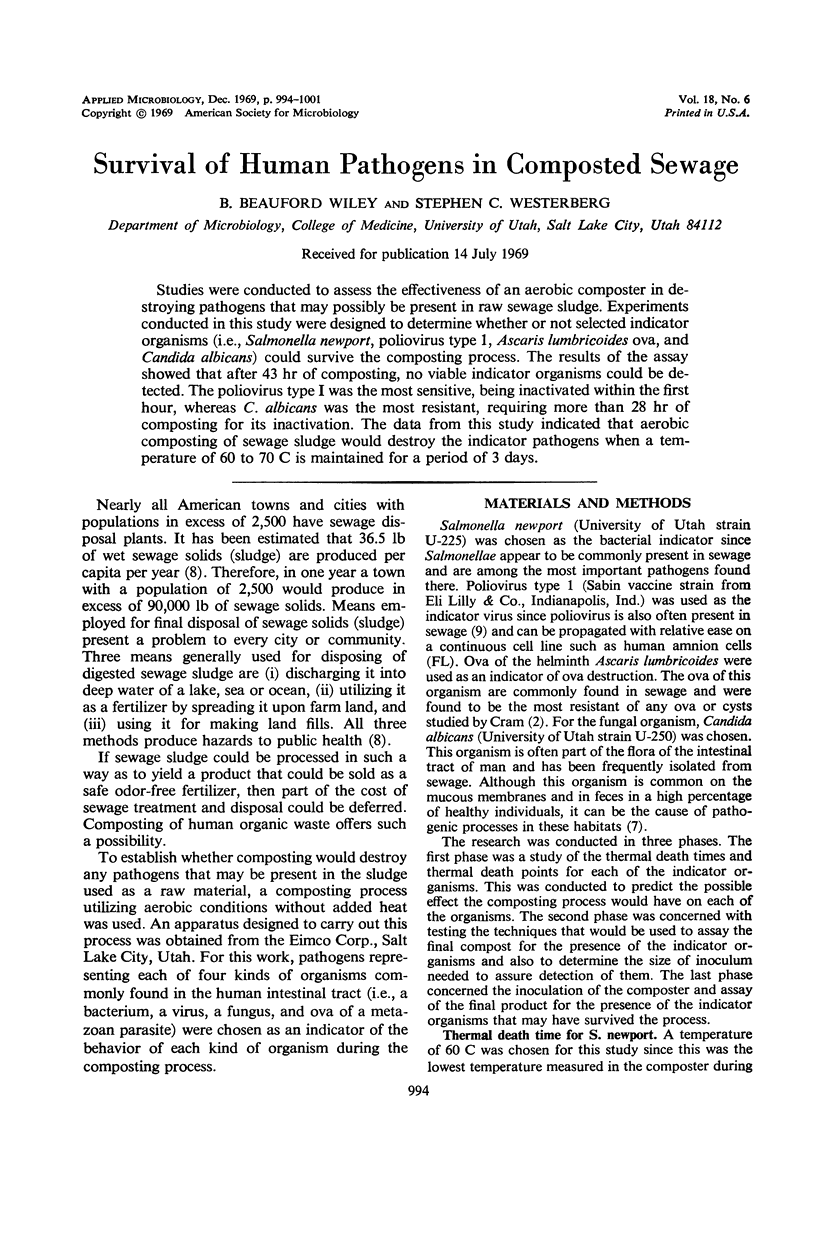
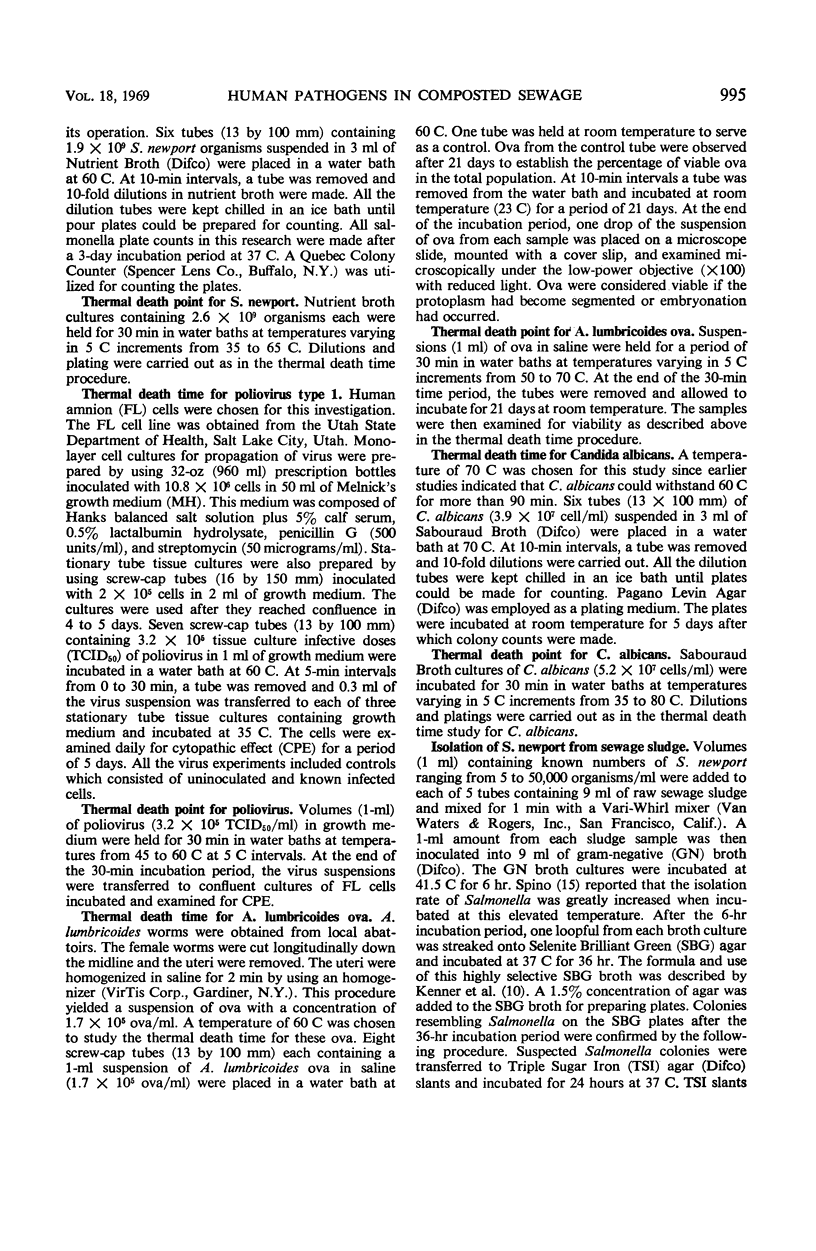
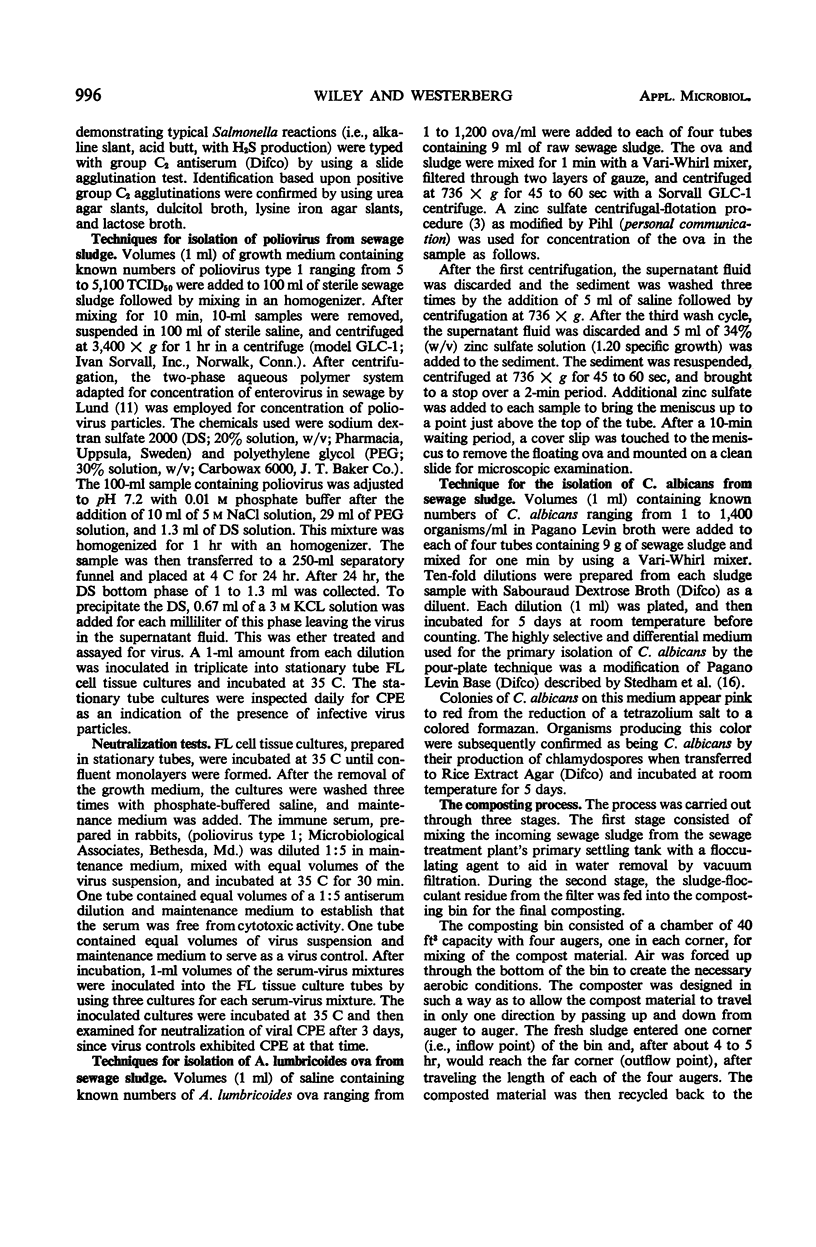
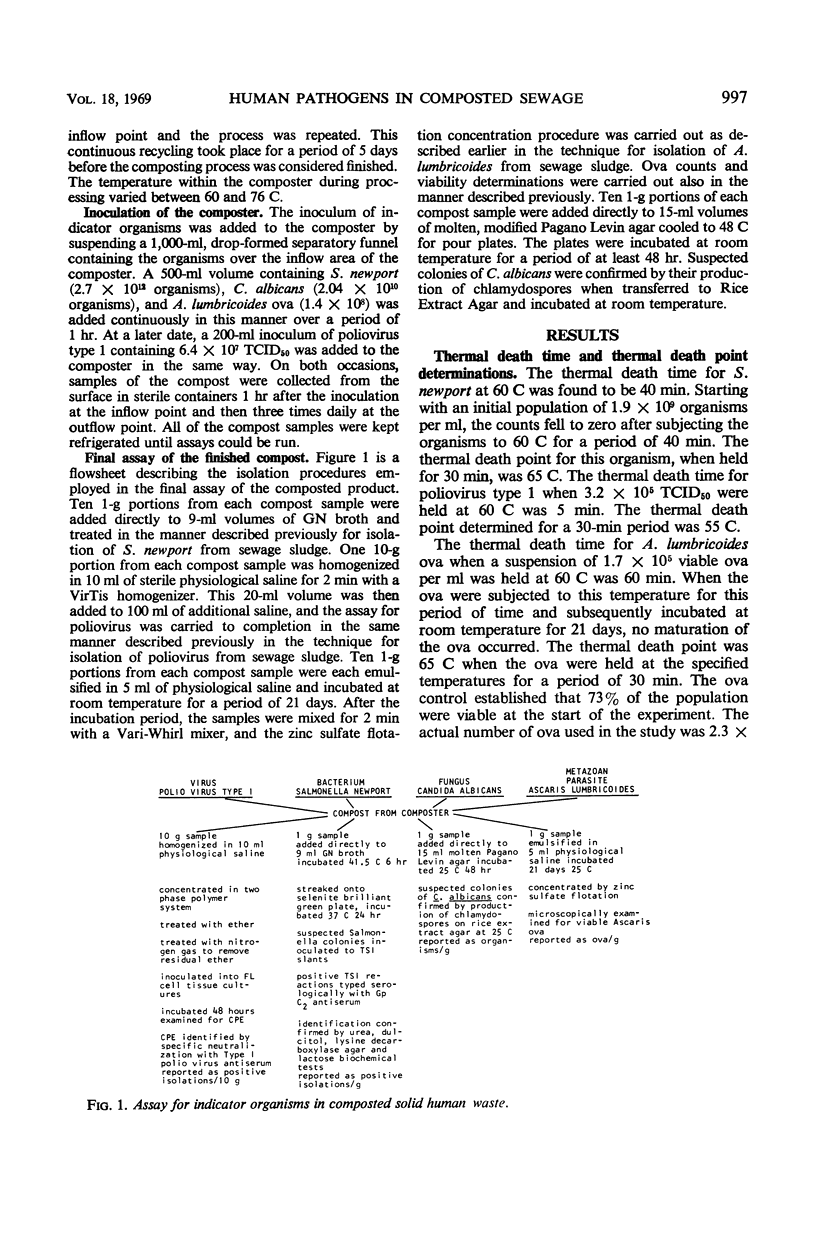

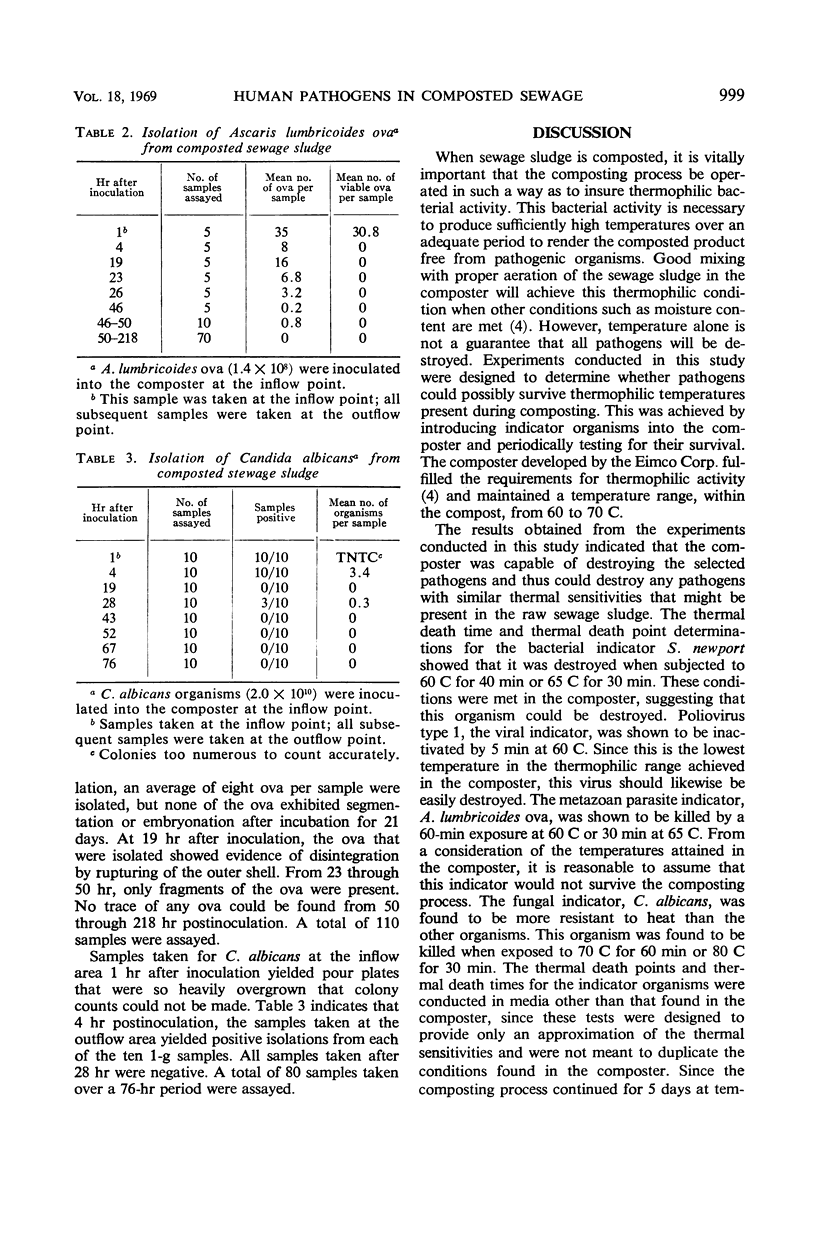
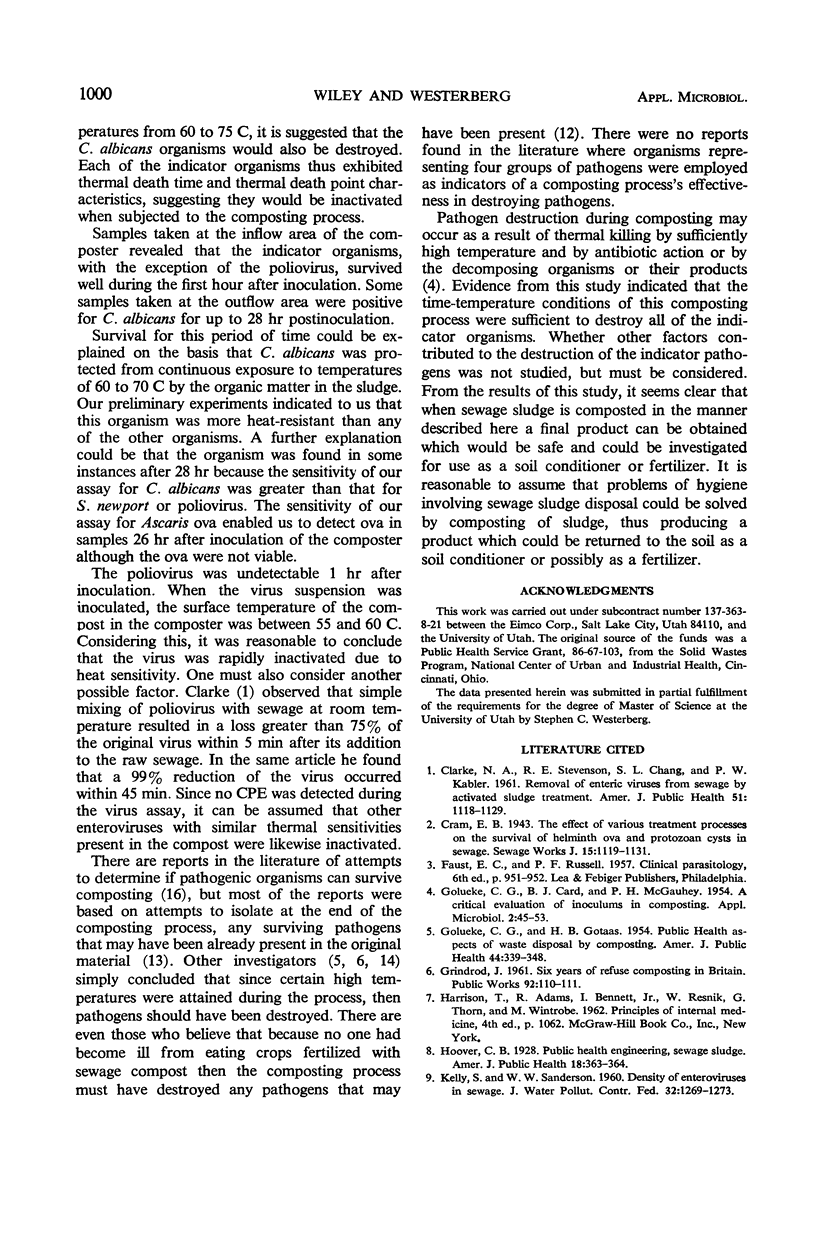
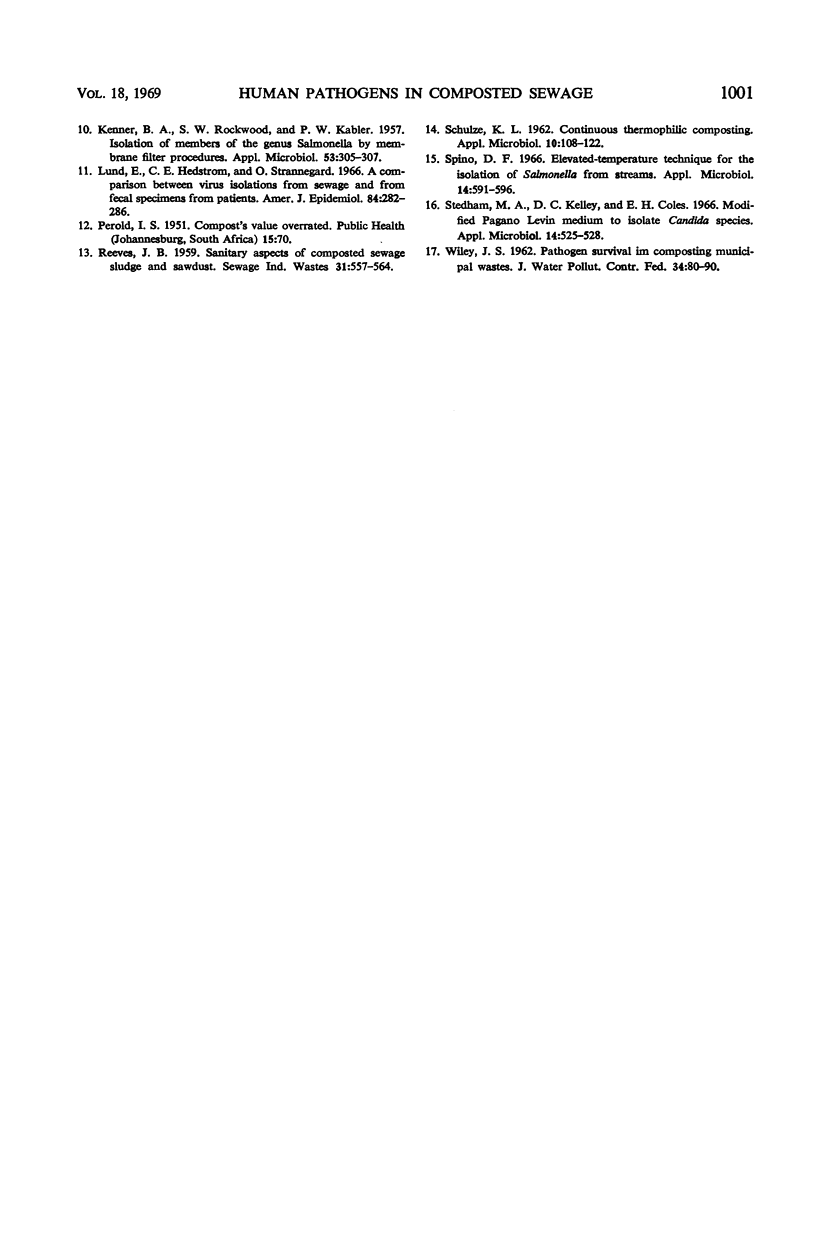
Selected References
These references are in PubMed. This may not be the complete list of references from this article.
- CLARKE N. A., STEVENSON R. E., CHANG S. L., KABLER P. W. Removal of enteric viruses from sewage by activated sludge treatment. Am J Public Health Nations Health. 1961 Aug;51:1118–1129. doi: 10.2105/ajph.51.8.1118. [DOI] [PMC free article] [PubMed] [Google Scholar]
- GOLUEKE C. G., CARD B. J., McGAUHEY P. H. A critical evaluation of inoculums in composting. Appl Microbiol. 1954 Jan;2(1):45–53. doi: 10.1128/am.2.1.45-53.1954. [DOI] [PMC free article] [PubMed] [Google Scholar]
- GOLUEKE C. G., GOTAAS H. B. Public health aspects of waste disposal by composting. Am J Public Health Nations Health. 1954 Mar;44(3):339–348. doi: 10.2105/ajph.44.3.339. [DOI] [PMC free article] [PubMed] [Google Scholar]
- KENNER B. A., ROCKWOOD S. W., KABLER P. W. Isolation of members of the genus Salmonella by membrane filter procedures. Appl Microbiol. 1957 Sep;5(5):305–307. doi: 10.1128/am.5.5.305-307.1957. [DOI] [PMC free article] [PubMed] [Google Scholar]
- Lund E., Hedström C. E., Strannegård O. A comparison between virus isolations from sewage and from fecal specimens from patients. Am J Epidemiol. 1966 Sep;84(2):282–286. doi: 10.1093/oxfordjournals.aje.a120641. [DOI] [PubMed] [Google Scholar]
- Miller A. P., Hoover C. B. PUBLIC HEALTH ENGINEERING: SEWAGE SLUDEG. Am J Public Health Nations Health. 1928 Mar;18(3):363–367. doi: 10.2105/ajph.18.3.363. [DOI] [PMC free article] [PubMed] [Google Scholar]
- SCHULZE K. L. Continuous thermophilic composting. Appl Microbiol. 1962 Mar;10:108–122. doi: 10.1128/am.10.2.108-122.1962. [DOI] [PMC free article] [PubMed] [Google Scholar]
- Spino D. F. Elevated-temperature technique for the isolation of Salmonella from streams. Appl Microbiol. 1966 Jul;14(4):591–596. doi: 10.1128/am.14.4.591-596.1966. [DOI] [PMC free article] [PubMed] [Google Scholar]
- Stedham M. A., Kelley D. C., Coles E. H. Modified Pagano Levin medium to isolate Candida species. Appl Microbiol. 1966 Jul;14(4):525–528. doi: 10.1128/am.14.4.525-528.1966. [DOI] [PMC free article] [PubMed] [Google Scholar]


